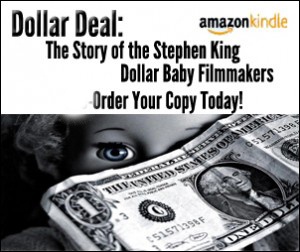When discussing horror movies, there is a prevailing thought that the genre is just for boys. Directors like John Carpenter, George Romero, and Wes Craven are names that any horror fan can spout off the top of their head. However, ask those same fans to name one female horror director and you might get a blank stare. Even in the horror anthology “Masters of Horror,” not one episode was directed by a woman.
This is something Hannah Neurotica hopes to rectify with Women in Horror Recognition Month.
Hannah Neurotica is a horror writer and podcaster who has been a fan of horror movies since childhood. She was invited to sit on a panel discussing what was described as a new phenomenon created by Diablo Cody’s film “Jennifer’s Body.” This crazy idea was that women could make scary horror movies and other women could actually enjoy them.
“If you ask someone to name a female horror director, it is really hard for them, which is sad because there is a ridiculously long list,” Neurotica explains.
This set in motion her idea of creating a month where women in horror could be celebrated.
The Beginning
Hannah Neurotica was sitting on her couch thinking about the ignorance of the general public towards the thought that girls could actually enjoy horror movies. It was not a new thought, as she herself was a feminist when she began college and stopped watching the genre for a short time.
“I remember my professor saying horror films were misogynist and I kind of felt guilty,” Neurotica said. “How can I be a feminist and like horror?”
Then she discovered the book “Men, Women, and Chain Saws” by Carol Clover. The book is a critical essay on the effects of female representation in horror movies on men.
“I was like ‘whoa, there is a book about gender and horror?’ It blew my mind,” Neurotica continued. “That is the moment when everything started in terms of the work that I do in horror.”
In fall 2009, Hannah Neurotica chose to start the Women in Horror Recognition Month. She sent out e-mails, posted blogs and sent Facebook messages about her ideas and then sat down and wrote up the manifesto.
The manifesto featured tips on how to get involved. These included posting on websites, starting film festivals and conventions, having house parties as well as hosting art shows and readings, and then sharing the stories with her.
She never realized how big it would grow.
Success Stories
“I met Jen and Sylvia Soska through an interview I had with Eli Roth on a magazine that I edit,” Neurotica said. “He had told me about ”Dead Hooker in a Trunk.“ Nobody really knew who the filmmakers were outside Vancouver.”
The advent of the Women in Horror Recognition Month film festivals opened doors for the Soska’s that never existed before. The filmmakers entered “Dead Hooker in a Trunk” to every Women in Horror-themed film festival and it was accepted in all the festivals.
The success of the festivals meant that Jen and Sylvia Soska could get their movie out there for people to see. The result of that promotion is that the two have a new movie they are making with a bigger budget and a name cast. The big name in their new movie is Katharine Isabelle, the star of “Ginger Snaps.”
“It’s a huge success story for Women in Horror Month,” Neurotica said. “Aside from that, they also started a National Blood Drive which got a lot of people giving blood.”
The Future of the Event
In 2011, the second year of the event, there are more film festivals and conventions and Hannah Neurotica could not be happier.
“I am having trouble updating because last year I could say, ‘okay, this is happening here and this is happening here,’ and now every day there is something new in the works,” Neurotica said. “It is great but it is really hard for me to keep up with. That is a good thing.”
In 2011, there are film festivals in Philadelphia, Los Angeles, Austin, Canada, Scotland and more. There are conventions as well as the ongoing blood drive that anyone can take part in. The festivals honor not just female filmmakers, but also actresses, FX artists, writers and, of course, female horror fans.
“I would like for it to be a norm that a horror film can be picked up by major studios or film festivals that are made by women without it being a token thing,” Neurotica said. “Women have stories to tell that are pretty horrific and can be pretty scary that men can’t even comprehend. If anyone can be scary, women can because we know what it’s like to be in fearful situations. I think it’s the future of horror.”
The future of horror is here and it is celebrated every February in “Women of Horror Appreciation Month.”





